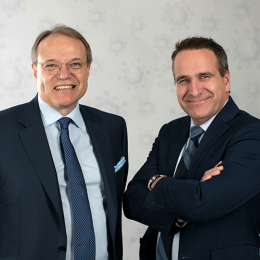Why the Time Value of Money (TVM) should matter to you
Proper financial planning takes time and the help of a good financial planner to determine your current and long-term financial goals.
First you need to understand some basic financial terms, including Time Value of Money. And to appreciate the meaning of TVM, you need to understand interest rate and discounting.
Most pharmacists understand that money deposited in a savings account will earn interest: the percentage of a dollar amount which is charged for its use over a period of time. It can also be thought of as the cost of not having money for one period, or the amount paid on an investment per year.
To take advantage of interest, logic dictates that a pharmacist would prefer to receive money today as opposed to receiving the same amount in the future. For example, let’s assume a pharmacist could earn 5% interest. An investment of $100 invested today would be worth $105 in a year. We simply multiplied $100 by 5% to get $5 interest and then added it to our principal amount of $100.
Discounting is another important financial term, referring to the process of determining how much money paid/received in the future is worth today. So, $100 received one year from now is actually worth only $95.24 today. We calculated this by discounting $100 by 5% for one year.
This example illustrates the notion that money available at the present time is worth more than if we were to receive the same amount in the future. This is due to the potential earning capacity of an investment. The notion of TVM means that money that can earn interest is worth more the sooner it is received.
This concept is integral to all parts of business. Investors should be focused on the total value of their investment in its entirety. For example, a pharmacist will discount future cash flows to accurately value the business today.
In another example, lottery winners often have two options of how they can receive their winnings. Let’s use $5 million as the fictional amount.
Option 1: Take $5,000,000 right now.
Option 2: Receive $600,000 at the start of every year for the next 10 years.
In Option 1, the winner receives a lump-sum payment of $5,000,000, while in Option 2, the winner receives a $600,000 payment for 10 consecutive years. Using simple math, Option 2 initially seems like the better bet because the winner receives an extra $1,000,000, but the TVM concept comes into consideration since some of the money is paid to the winner in the future. By calculating how much Option 2 is worth today by discounting the future cash flows, the winner will be able to better compare the two options. If Option 2 turns out to be worth less than $5,000,000 today, the winner should choose Option 1, or vice versa.
|
Option 2 Payment of $600,000 with interest at 4% per year |
|||
|
|
1.04 |
|
|
|
Year 1 |
600,000 |
$600,000 |
|
|
Year 2 |
600,000 / (1.04) = |
$576,923 |
|
|
Year 3 |
600,000 / (1.04)²= |
$554,734 |
|
|
Year 4 |
600,000 / (1.04)³= |
$533,398 |
|
|
Year 5 |
600,000 / (1.04)⁴= |
$512,883 |
|
|
Year 6 |
600,000 / (1.04)⁵= |
$493,156 |
|
|
Year 7 |
600,000 / (1.04)⁶= |
$474,189 |
|
|
Year 8 |
600,000 / (1.04)⁷= |
$455,951 |
|
|
Year 9 |
600,000 / (1.04)⁸= |
$438,414 |
|
|
Year 10 |
600,000 / (1.04)⁹= |
$421,552 |
|
|
|
Total |
|
$5,061,199 |
In Option 2, if one can attain a 4% rate of return, it makes sense to accept 10 payments of $600,000. However, if the interest rate is anything less than that, then Option 1 is the better choice.
This shows the importance of considering the TVM when doing your financial planning.


